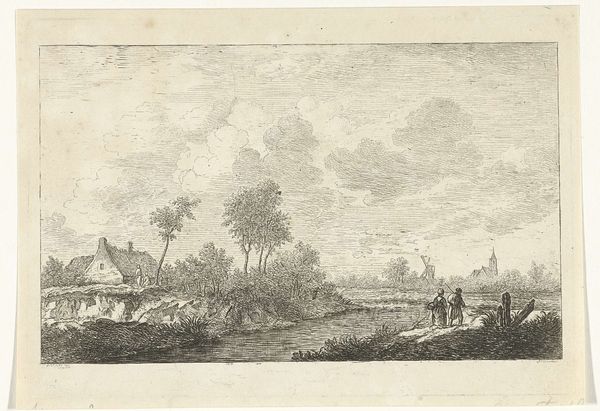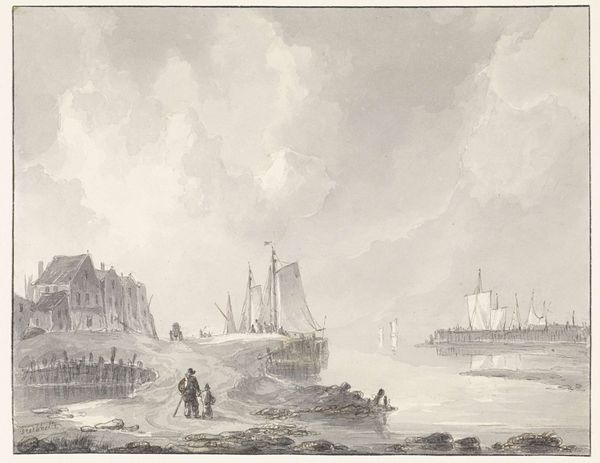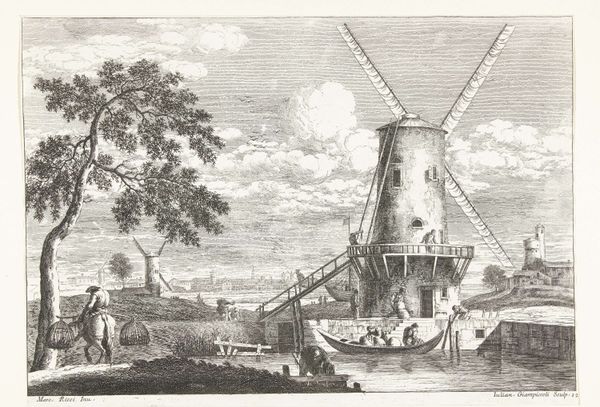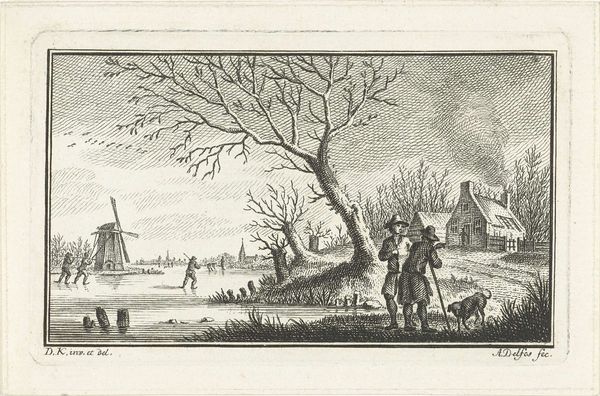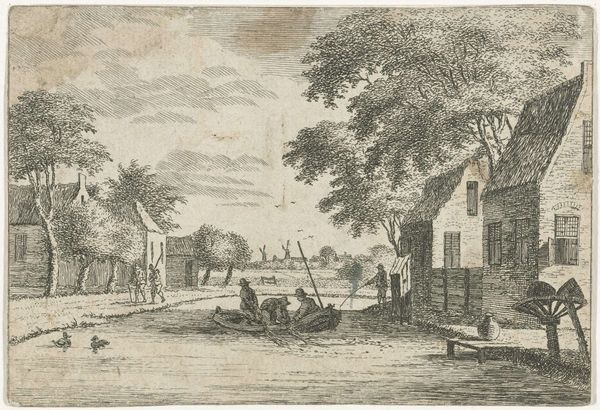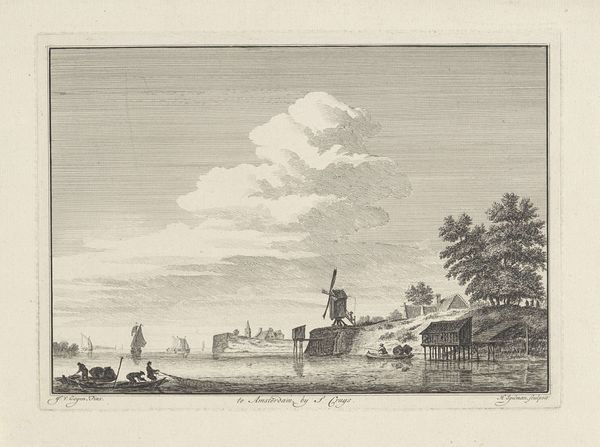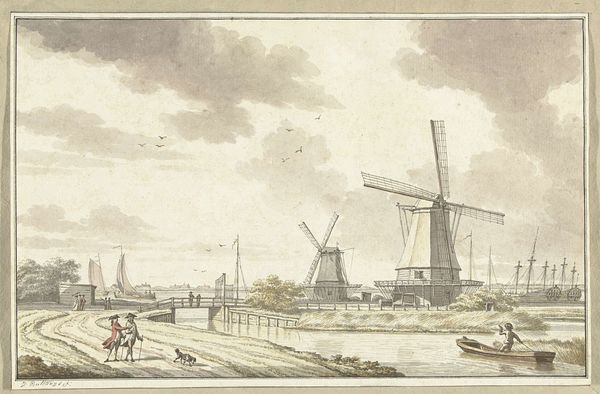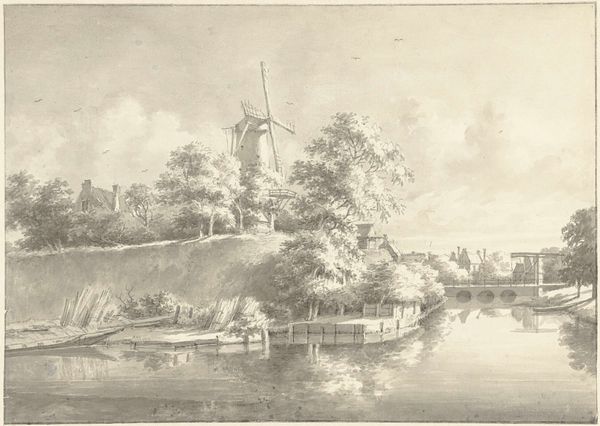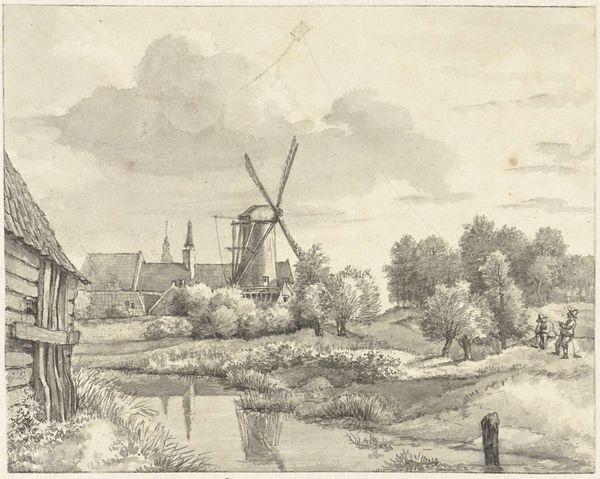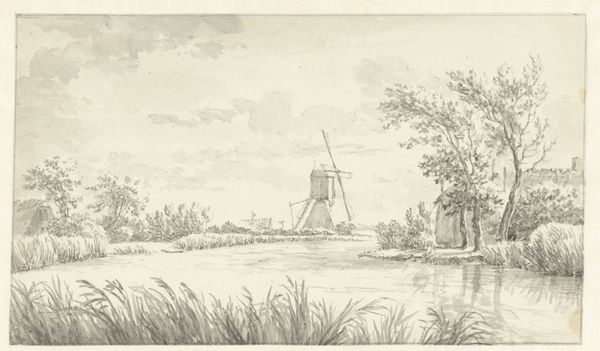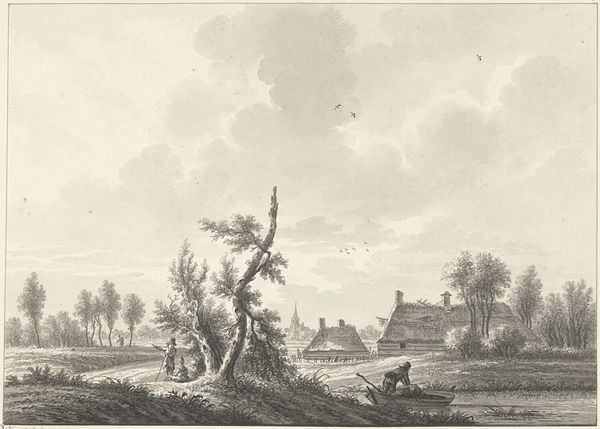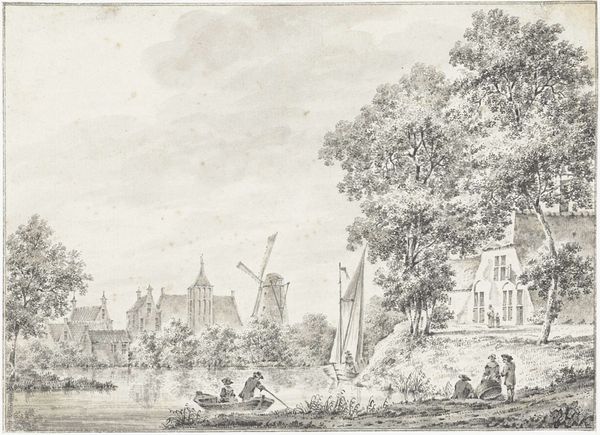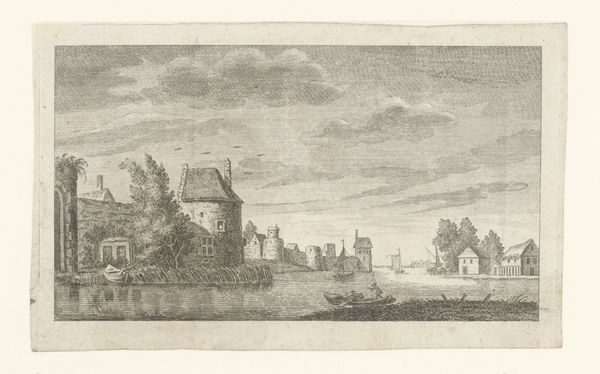
#
concept illustration shringley
#
imaginative character sketch
#
fantasy concept art
#
quirky sketch
#
pencil sketch
#
personal sketchbook
#
idea generation sketch
#
sketchwork
#
storyboard and sketchbook work
#
fantasy sketch
Dimensions: height 182 mm, width 295 mm
Copyright: Rijks Museum: Open Domain
Editor: So, this is "Aan het Spaarne te Haarlem" by Gerrit Groenewegen, dating from 1764 to 1826. It's currently housed in the Rijksmuseum. Looking at this sepia drawing, I am immediately struck by the serenity of the scene, the landscape... What do you see in this piece, considered through a historical lens? Curator: What stands out to me is how Groenewegen portrays Haarlem during a period of significant social and economic change in the Netherlands. This is post-Golden Age; the Dutch Republic's dominance in global trade had waned. This landscape, though seemingly peaceful, also silently reflects a society adjusting to a new reality. Notice how the windmill and church spire dominate the horizon— symbols of traditional Dutch power and values? Editor: Yes, they're definitely prominent. Were images like these used to... reassure people, or remind them of a particular history? Curator: Precisely! Pictures of the Dutch countryside helped solidify a sense of national identity, a sense of continuity at a time of huge upheaval. The image projects a sense of stability even as society shifted from trade towards industrial production. The details of daily life that Groenewegen chooses to show are interesting too—people engaged in leisurely river travel, walking along the road. Consider: for whom were these leisurely pursuits truly available at the time? How might this imagery portray an idealized version of Dutch life? Editor: That’s such an interesting point, thinking about who gets to enjoy and participate in this 'serene' landscape. So, these idyllic scenes really performed a role in shaping public perceptions? Curator: Exactly. Art doesn’t just reflect society, it shapes it, too. Understanding that dynamic is key. Editor: I never thought of landscapes being so politically charged. Curator: That's the beauty of art history – it reveals the complex ways in which art and society are intertwined.
Comments
No comments
Be the first to comment and join the conversation on the ultimate creative platform.
